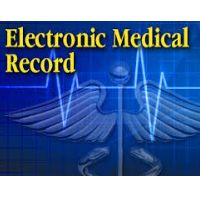A few months ago, I was speaking with a senior hospital executive about their future EMR plans. I was really surprised by the exec’s views. His organization looked at EMRs as purely the hospital’s database. Their strategic goal was to maximize the value of that database by providing the best-in-class experience for each type of user. This meant that the interaction that a physician might have with the EMR could be with a very different product from what might be used by someone in Patient Registration. The EMR would be the repository for all of the hospital’s data, but the software actually used by an individual might be developed by a different company.
I was surprised by this forward thinking since most hospitals look at their EMR as the “mother-of-all-software,” and if an application is not written by their EMR vendor, then they view it with skepticism. I was thinking about this strategy today – actually on a plane flying at 30,000 feet – and I realized that other industries have already adopted similar strategies for maximizing the value of their information.
Airlines – the most obvious industry is the transportation one I’m riding with right now. Years ago, airlines began to realize the value of their operational data. The reservation, flight scheduling and capacity management applications all built on top of their main database yielded great value. In the last few years, the airlines have kept building on that value by opening up the data to include third party applications. For example:
- The gate agents and reservations systems use software built just for them.
- Consumers can book flights using a number of different websites (Expedia, Orbitz, Hipmunk, etc.) and check flight status numerous ways.
Moving into the mobile world, most airlines have produced very attractive tools for their customers. However, there are a number of tremendously valuable travel apps (TripIt, PriceLine, Hopper, etc.) that utilize the airlines’ databases in new applications to provide additional value to end users. Remember that airlines were once a heavily regulated industry with proprietary information. Once deregulation occurred and they were forced to compete, they quickly realized the value of their data both internally as well as for their customers.
Automotive – Fifty years ago, car manufacturers possessed islands of information. They viewed their manufacturing information as secrets to their success. Then, in the 1970’s, the big three’s lock on American consumers was broken by more fuel-efficient and less costly foreign imports. Domestic car makers were forced to change their ways. Although reluctant to do so, they began opening up their critical information to their suppliers. For example, a supplier of seats for passenger vehicles can see exactly how many cars and of which type are going to be made today. The seat company can then deliver the needed seats “just in time” for the automaker to install them as the cars move through the assembly line. This sharing of critical data, via third party software, reduced the automakers’ inventories and cut their costs. But, more importantly, it improved the ultimate quality of their cars by making the seat-maker a partner, and not just a vendor, in the manufacturing process via access to data.
Hospitals & EMRs – How do these lessons apply to hospitals and the EMR? It’s no secret that the hospital market is becoming more competitive. In addition, changes in reimbursement polices are driving hospitals to improve the quality of care. If we use the lessons from the above markets that were forced to change due to increased competition, we should expect to see hospitals begin to utilize their critical data to reduce costs, increase revenues and improve quality. A hospital’s data repository is the EMR and this competitive pressure will lead to some expected changes:
- EMRs will be forced to “play well with others.” They will no longer be silos of information that do not interconnect with other systems.
- Third party software (i.e. products not built by the EMR vendors) will provide additional capabilities utilizing this new information.
- EMRs will be seen as the data repository and the access to the data will come from different front-end systems. A physician will interact with the data utilizing a product that is very different than one used by the hospital’s billing department.
For hospital IT executives, these changes will take you down one of two paths: you can either embrace the change and look for products that provide the needed access to information for your different users – or – you can wait for your EMR vendor to produce products for each of your end users. In the latter case, patience may not be a virtue.


